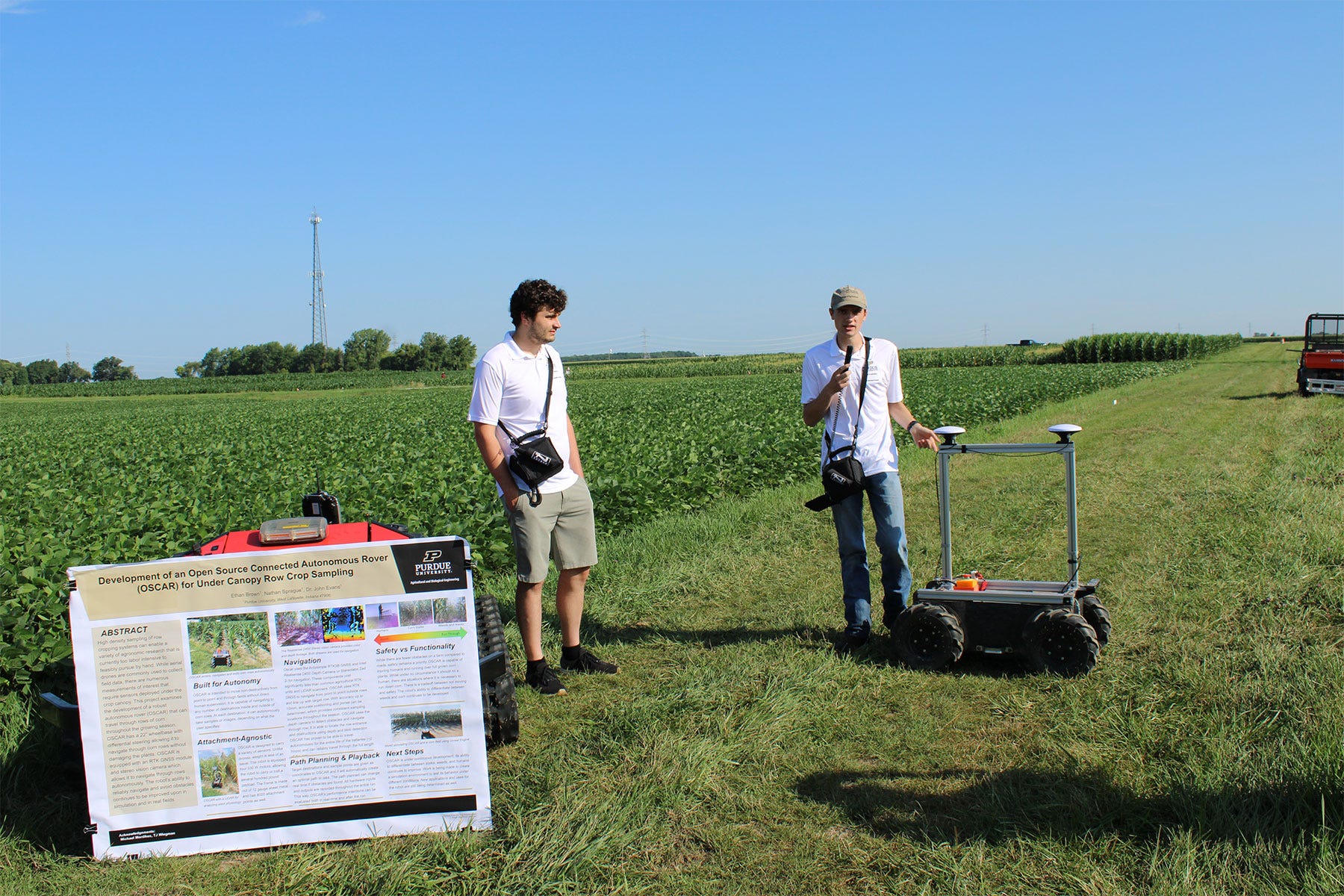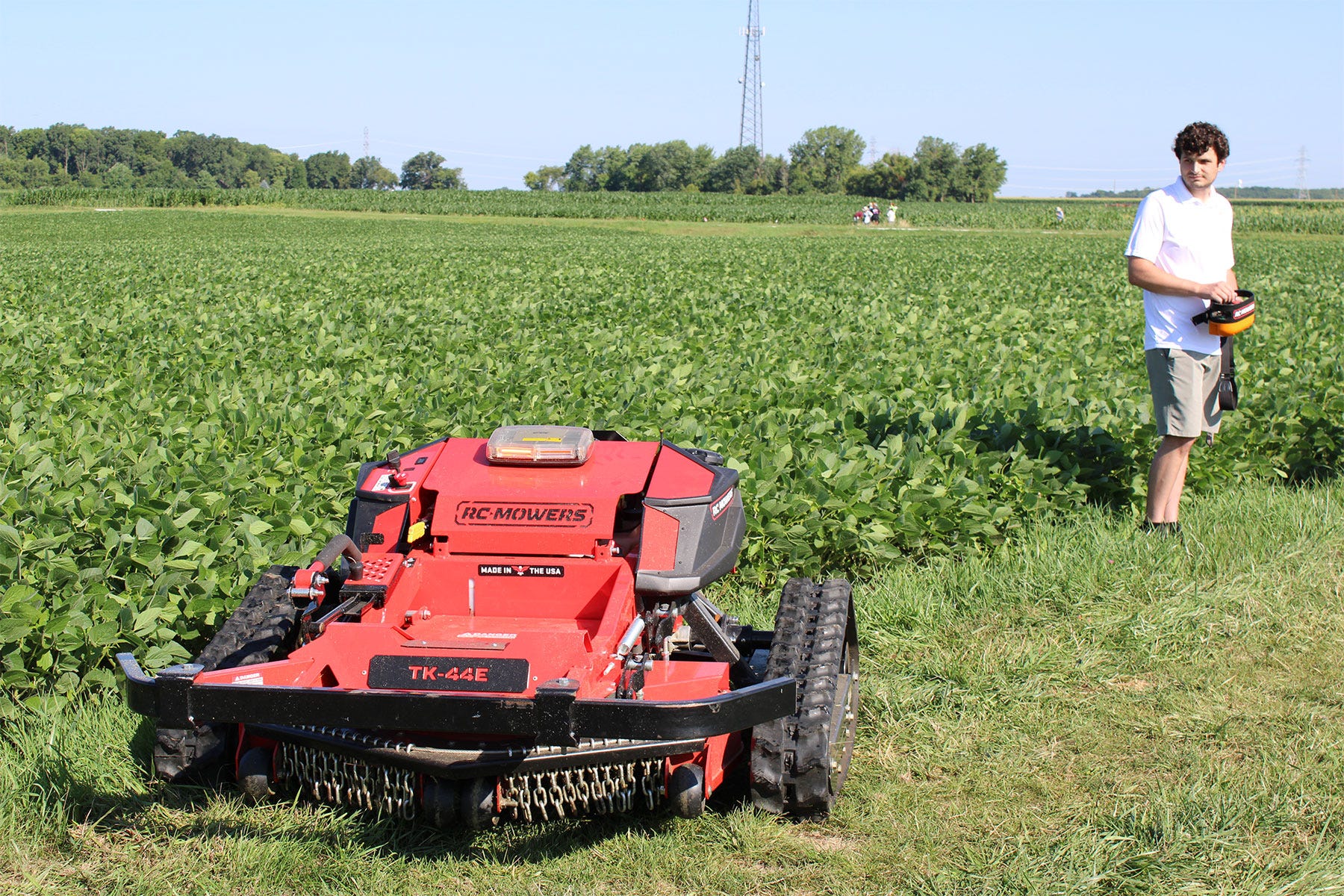August 10, 2023

by Allison Lund
Interrow autonomous sensing platforms could soon replace the many hours spent walking fields to scout crops throughout the growing season.
A team of researchers at Purdue is developing various autonomous robots that can complete different tasks on the farm and beyond. At the Digital Ag Showcase hosted by the Purdue College of Agriculture, two such robots were on display.
The interrow robot is referred to as an Open Source Connected Autonomous Rover, or OSCAR for short. OSCAR is designed to travel through 30-inch rows of corn and take pictures or grab whatever information the user specifies.
With two antennas — one for position and one for heading — and a stereo camera located in front for color and depth, OSCAR can switch between the two for navigation. The RTK GPS that OSCAR uses allows for centimeter accuracy. It is designed to travel from point to point in a field without causing damage to plants.
“Being able to go from point to point is a surprisingly difficult task,” explains Nathan Sprague, a graduate student in agricultural and biological engineering.
To train OSCAR for interrow operation, the users feed its neural network with many images of the inside of the corn rows to help it determine where the center of the row is located. Videos of rows can also be used to train OSCAR for operation.
Sensors attached to OSCAR can help scout for diseases and insects, while other attachments could allow for more operations to be conducted, such as soil sampling.

CHANGING THE GAME: Autonomous robots could soon change how crop scouting is conducted. Purdue students Ethan Brown (left) and Nathan Sprague share more about the robots at Purdue’s Digital Ag Showcase.
OSCAR’s designs and code will be made available to the public so anyone can replicate the machine. The RTK GPS in the model on display at the showcase costs around $1,200, but some lower-end GPS devices cost about $600. This makes it easy for people to construct their own autonomous robot that can help perform field operations.
“This is a pretty bare-bones system that is meant to be built by anyone who wants to build it,” Sprague says.
There is still some work to be done to improve OSCAR, such as finding ways to make it waterproof and increasing its accuracy. However, folks can expect to see more of this kind of technology soon.
Mow by remote control
In addition to OSCAR, the showcase featured a remote-controlled mower manufactured by RC Mowers. The mower ideally would be used to mow roadside ditches.
The mower is essentially a zero-turn mower. Purdue is working with the Indiana Department of Transportation to explore the potential for autonomy with the addition of GPS and cameras soon. It could reduce the danger associated with sending a mowing team out to clean up ditches, especially in busy areas or along narrow roads.

SAFER MOWING: Remote-controlled mowers could soon become autonomous with GPS and camera attachments, making roadside mowing safer. Ethan Brown demonstrates a remote-controlled mower manufactured by RC Mowers.
Before these mowers can be sent out to execute that task, they are first being sent through a simulated environment to ensure they will function properly.
“We want to be able to validate that the simulation would work in the field,” says Ethan Brown, a master’s student in mechanical engineering.
While these new technologies aren’t quite ready to work, they are on their way to making tasks on the farm easier and safer.
Lund is a Farm Progress intern. She writes from West Lafayette, Ind.
You May Also Like




